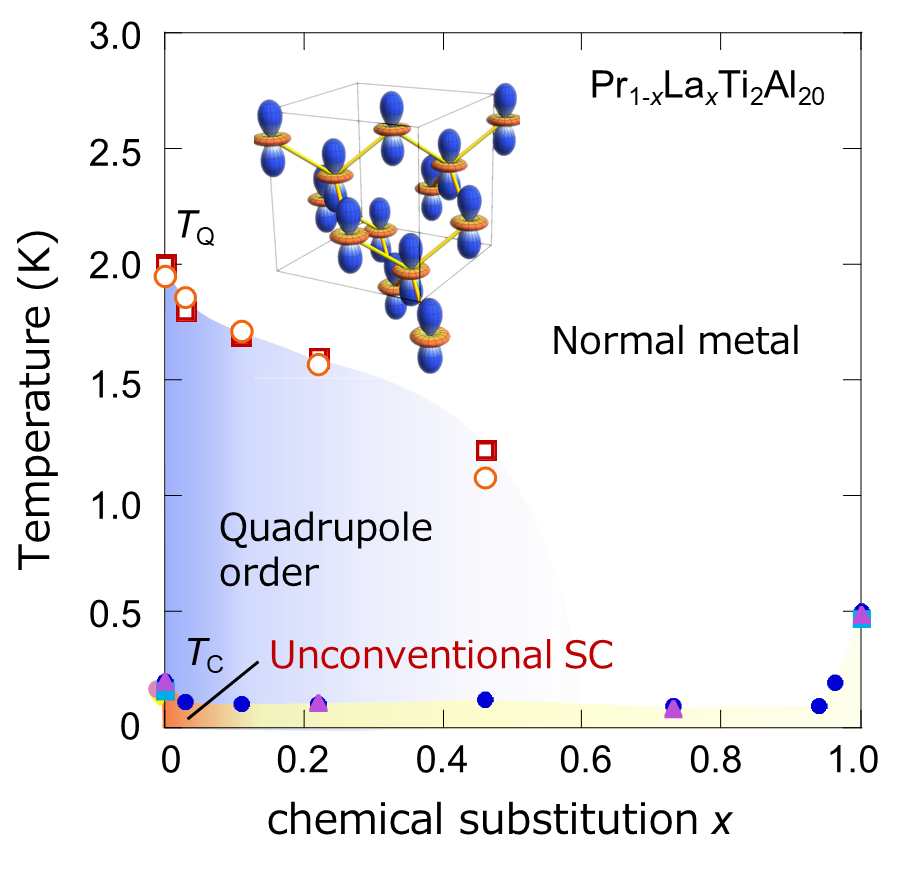DATE2025.03.06 #Press Releases
Multipolar Moments Offer a New Platform for Novel Superconductivity
Summary
Researchers in the field of quantum materials have long explored fascinating phenomena driven by spin, or magnetic dipolar moment, which can be imagined as miniature magnets, each possessing north and south poles that attract or repel each other. In real materials, the electrons' spin, orbital, and charge can interact intricately, forming microscopic objects with far more complex shapes than simple dipoles. For instance, one can imagine a distorted cube, with faces and corners all uniquely interacting. These are known as "high-order multipolar moments."
Despite their great potential to create new classes of quantum phases and properties, their effect often goes unnoticed in experiments due to the dominant influence of dipolar moments. The research team at the Department of Physics, University of Tokyo, led by ed by Lecturer Akito Sakai and Professor Satoru Nakatsuji, has made a key leap forward in uncovering the unique characteristics of superconductivity driven solely by high-order multipolar moments. Their work lies on PrTi2Al20, a compound with high-order quadrupolar and octupolar moments but no magnetic dipolar moments - an unmatched advantage in searching for new superconducting phenomena driven by multipolar moments. Their experimental study examines the gap structure of superconductivity in PrTi2Al20 and how the gap evolves with La doping. The findings indicate a deviation from the textbook BCS-type superconductivity, suggesting a novel nodal d-wave or multi-gap structure. The doping dependence study found that the quadrupolar order and the symmetry of the superconducting pairing are tightly linked, offering new insights into the coexistence of superconductivity with multipolar order. The findings could pave the way for further breakthroughs in understanding unconventional superconductivity in brand-new material platforms.
The results of this study were published in the journal Nature Communications on 03 March 2025.

Figure: Low temperature phase diagram of Pr1-xLaxTi2Al20. The inset shows ferroquadrupole ordering in PrTi2Al20.
Related links: The Institute for Solid State Physics (ISSP), The UTokyo and Japan Science and Technology Agency (JST).
Published Journals
-
Journal name Nature CommunicationsTitle of paper


